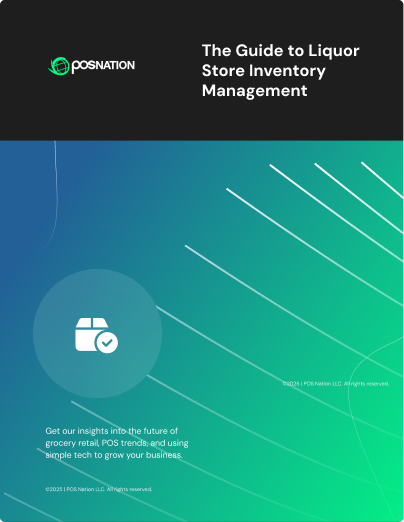Now’s the time to open a smoke shop.
Bold claim? Perhaps.
The global tobacco market was estimated at over $108 billion in 2025 and continues to grow year over year. People are buying cigarettes, cigarillos, cigars, and next-generation products at an increasing rate, so if you’re ready to strike, the iron is hot.
But is opening a smoke shop worth the investment? With tariffs and inflation, can you still turn a healthy profit? That depends on several factors, such as your inventory management, marketing strategy, the types of products you sell, and your location.
This blog post will give you an overview of the expected profit and the factors to consider when opening a smoke shop.
Let’s get started.
How Profitable Is a Smoke Shop?
The profitability of a smoke shop can vary drastically, falling between $50,000 and $500,000 annually, and profit margins usually fall between 4–6%. Why such a wide range of numbers? Because the revenue and profits from your smoke shop heavily depend on a few key factors, like:
- Location: A smoke shop’s revenue (and rental costs) will depend highly on geographic factors like the state you’re in, if you’re in a rural or urban area, local demographics, if there are complementary shops nearby, and more.
- Inventory and selection: In addition to staples like cigarettes, you may choose to specialize in more niche products like cigars, vapes, or hand-rolled tobacco. These high-margin items can boost profits, but increase your monthly inventory costs — which means it’s vital to understand your customers’ preferences.
- Operating costs: Expenses like rent, staffing, utilities, and the technology you use all factor into your take-home pay. The more efficiently you run the store, the more money you’ll take home.
- Competition: It’s harder to turn a profit if there are many other smoke shops in the same area selling similar products. Stand out to your customers by doing competitor analysis to help define a unique niche for your business.
- Taxes and regulations: Taxes on tobacco products and the cost of tobacco retail licenses can vary wildly by state or even county by county.
Some expenses, like taxes and licenses, are out of your control — but closely monitoring things like inventory and operating costs may expose opportunities to reduce costs, improve the customer experience, and rake in more profit.
Before You Start Earning, You Have To Open
Of course, to start earning a profit, you’ll need to earn back your startup costs.
Opening a smoke shop costs about $60,000 on average, and the estimated revenue is between $300,000 and $500,000 per year. If you do things correctly, your store can make a lot of money — but high revenue doesn’t always equate to increased profit.
Even with great sales numbers, if you’re overstaffing, paying too much for a location, or running the store inefficiently, you might be breaking even or in the red.
Your best bet is to write a detailed business plan and cover all your bases, including startup costs, licenses, permits, registering your business, and projecting income and profits.
That way, you’ll have a realistic idea of what your expenses will be and how much you’ll need to earn per month to turn a profit before you put down real money.
Top 6 Considerations To Maximize Smoke Shop Profitability
While there are some aspects of your smoke shop’s success that are out of your control, having a keen understanding of those factors helps you better prepare against the unexpected.
Here are six important aspects to keep in mind to ensure your smoke shop has the high ground.
1. Choose the Right Location
Location is one of the most important early decisions you make when opening a new smoke shop. Think about ease of access, a budget-friendly space, and the licenses you need to open your store where you are.

The goal is to strike a balance between foot traffic, potential sales, and overhead costs. Think about these factors:
- Size: The average commercial rent in the U.S. is about $29 per square foot/year — don’t pay for space you don’t need.
- Foot traffic: A store near a college campus or in another high-traffic area might lead to more sales, but have higher rent. Similarly, a less affluent area might have lower rent, but people have to travel farther to get to you. Research the demographics of your desired area to strike the right balance between affordability and foot traffic.
- Surrounding stores: Ideally, you want to open your smoke shop near complementary stores like liquor and grocery stores, but not too close to competing tobacco stores.
- Zoning laws: Local zoning laws determine how many tobacco shops can be in a given area, how close they can be to schools and residences, and whether or not you can smoke on the premises (which is key for something like a hookah bar or cigar lounge).
- Licenses: The cost of tobacco retail licenses will differ by state, county, or city. While usually not a huge expense in the grand scheme of things, it’s worth considering when calculating your startup costs.
So, where will you open your store? Don’t rush into a decision without considering everything above.
2. Account for Taxes and Tariffs
In the U.S., tobacco excise taxes, like sin taxes, are levied on each item sold by the producer and the wholesaler. For example, the current federal cigarette tax is $1.01 per pack. At the state level, the average cigarette tax is $2.01 per pack.
These costs drive up the retail price of goods for customers as retailers need to charge more to turn a profit.
You also have to consider the array of tobacco products you sell. In some states, e-cigarettes and vape products are subject to a 40% tax rate — all of this without mentioning other taxes and your monthly tax returns.
More recently, many tobacco shops have had to contend with tariffs. Tariffs are an import tax on foreign goods that are paid by the importing supplier or importer (e.g. U.S. wholesalers or distributors). Tariffs usually result in increased inventory costs — in other words, to maintain the same pre-tariff profit margins, you’ll likely have to raise your prices.

This is particularly relevant for the fastest-growing segment of the tobacco industry: cigars and pipe tobacco. Many cigar exporters are facing tariffs between 10–35%. Tariffs are also affecting accessories like cutters, lighters, and humidors.
The sales data from your point of sale (POS) system will help you understand the costs from different distributors and potentially negotiate lower rates with your suppliers on items with a high or consistent sales volume. You can also look at the profit margins of individual items or product categories to make more strategic price adjustments instead of blanket increases.
3. Reduce Labor With the Right Technology
A lot more goes into running a smoke shop than ringing up customers and counting the money — every day you’ll stock shelves, do inventory counts, write purchase orders, plan promotions, and perform all kinds of other tasks. Invoicing and updating stock levels alone can take an entire day when done manually or using spreadsheets. As prices of inventory and rent increase, it’s crucial to find ways to work smarter and more efficiently.
A modern smoke shop POS system is essential for speeding up data entry and other tasks so you can boost profits. There are many POS systems available, including cheaper options built for general retail and more specialized, tobacco-specific systems.
The main difference is that specialized systems, while a little more expensive, tend to have industry-specific features like support for tobacco scan data, label printing for cigars, ID scanner integrations, and advanced inventory management features.
As when assessing a location, don’t simply look at the monthly price tag. Think about both the costs and the potential time you’ll save on data entry, invoicing, and other important features.
See a Success Story: Huntington Humidor
4. Invest in Marketing
Marketing is easy to put on the back burner when you’ve got a store to run, but it’s a must for finding long-term success. A tobacco store marketing plan consists of:
- Building your online presence by hosting a website, writing newsletters, and running a social media account
- Managing point programs or membership tiers to help retain existing customers
- Running promotional events and sales to bring in customers and boost sales
- Creating or putting up in-store signage to promote certain products or sales
- Designing your store layout to encourage upselling, browsing, and impulse buys
All of these aspects combine to generate interest for new customers and to keep your loyal customers coming back for more.
The most important part of your tobacco store marketing is including what makes your store unique. In other words, why should people choose your smoke shop over the competition?

Does it feature a cigar lounge or social smoking areas? Do you offer a wide variety of e-cig flavors? Or maybe you pride yourself on friendly customer service and expert recommendations.
Lean into whatever it is that makes your store special — just make sure to follow tobacco advertising rules and regulations.
Even if you don’t plan to sell your products online, you want to invest in showing up in local web searches. Most people find new businesses by searching online, so keep your website up to date and create a Google Business Profile at a minimum.
Where and how you spend your marketing budget impacts potential profits. It might not be wise to pay for ads if you don’t know how to make the most of them. On the other hand, a modern POS system provides marketing capabilities like loyalty programs and email marketing integrations.
5. Optimize Inventory Levels and Product Selection
Robust inventory management can make or break your store. Don’t go overboard with initial inventory, but make sure your shelves are well-stocked with top-selling brands and that you invest in attractive displays.
What do your customers want to see based on your trends and market research? For example, shops in college towns or areas with younger demographics might do better to stock more vapes and e-cigarettes. On the other hand, shops in more affluent areas or places with older populations might focus on premium cigars.
Getting the perfect product mix might take some time. Instead of just looking at overall sales volume, monitor the reports on your POS system to get actionable data on:
- Bestselling products and product categories
- Profit margins by item, category, or distributor
- Inventory movement to spot dead stock or underperforming items
- Seasonal trends
- Average transaction amount and basket analysis (i.e. products that are frequently bought together)
These insights will help you invest more in the specific products that contribute the most to your success and phase out unpopular items. It’ll also help you with merchandise planning, demand forecasting, and other long-term inventory planning.
6. Improve Customer Service
Even with the best selection and great marketing, your store won’t stay popular if the customer service is lousy. Investing in great employees and customer retention methods from the get-go will pay off in the long run.
Here are a few things you can do to create a better customer experience:
- Adjust staffing levels: Use your sales reports to see where your peak hours are so you can have extra staff on the floor during busy periods and save money when it’s quieter.
- Track customer history: Track your customer history so your cashiers can easily look up that e-cig flavor a customer loved but can’t remember the name of, or to make recommendations based on what they’ve bought before.
- Send personalized offers: Use the contact information you collect through your customer loyalty program to send out personalized offers and announcements (e.g. a 10% discount to any customers who’ve bought cigars in the last 30 days)
- Train employees on your POS: Customize your POS layout so frequently-used features are easy to find, speeding up checkout and the handling of any customer questions.
- Attach custom notes to inventory: Use an inventory system that supports custom notes (e.g. styles of cigars, tasting notes, etc). These can be searched to help employees make recommendations or pulled into custom reports for more detailed product analysis.
Convenience store chains and grocery stores are some of the biggest sellers of tobacco, and you probably won’t be able to compete with them on price alone. Creating a welcoming and friendly atmosphere in your shop will go a long way towards finding long-term success.
How Profitable Is a Smoke Shop? It’s All in the Details
Any business can be profitable with the proper research and execution. Smoke shops should be profitable because tobacco is in demand — but with rising inflation and prices, small businesses need to be smarter than ever to maintain a healthy profit margin.
Working with a technology provider that truly understands the ins and outs of the tobacco industry helps you reduce costs, improve the customer experience, and boost your cash flow.
At POS Nation, we’re passionate about connecting small businesses with the specialized solutions that help them survive and thrive.
Schedule your live, personalized demo with one of our smoke shop industry experts to find the right solution for your business.







 by Spence Hoffman
by Spence Hoffman

